Top 5 Headless CMS Examples for Modern Web Development
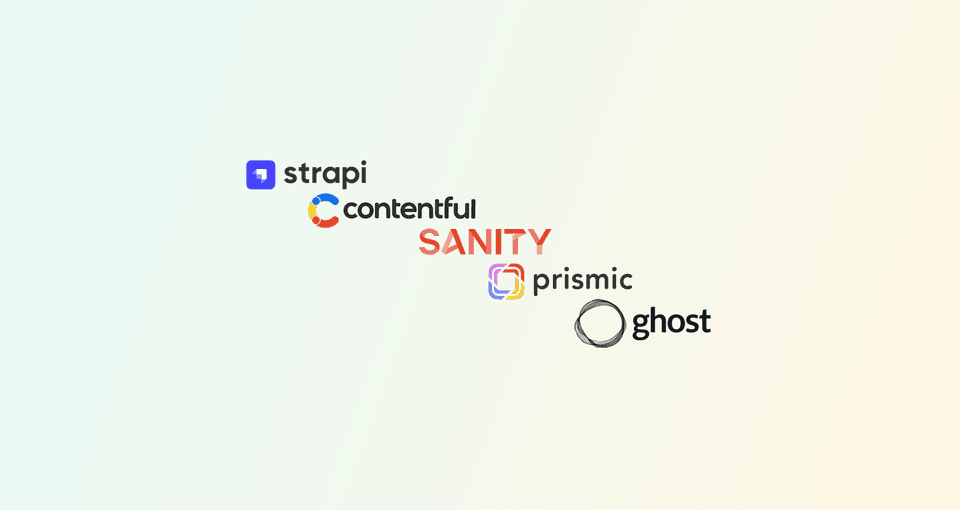
Content:
As web development continues to evolve, headless CMS platforms have reshaped how we approach content management. Unlike traditional CMS systems, headless CMS platforms separate content management from presentation, giving developers flexibility to use any front-end technology and allowing content to be shared seamlessly across websites, apps, and other digital platforms.
In this article, we explore the top five headless CMS platforms that are driving modern web development. Discover each platform’s key features, strengths, and ideal applications to find the best fit for your next project.
Introduction to Headless CMS
What is a Headless CMS?
A headless CMS is a content management system that separates the backend (where content is created and managed) from the frontend (where content is displayed). This setup enables content to be delivered across multiple channels via APIs, making it versatile and adaptable for various digital experiences. With a headless CMS, content creators focus on content, while developers have the freedom to choose the best tools for designing user experiences on websites, mobile apps, and beyond.
Key Features of Headless CMS Platforms
Headless CMS platforms offer unique features that set them apart from traditional systems:
- API-Driven content delivery: Content can be distributed across diverse platforms using APIs, whether on a website, app, or IoT device.
- Centralized content repository: A single hub for all content ensures consistent messaging and efficient management.
- Scalability: Built to handle increasing traffic and content needs as businesses grow.
- Multi-Channel publishing: Content can be published to various channels without needing separate management systems.
- Enhanced security: Features like role-based access control and data encryption keep content protected.
These attributes make headless CMS platforms an excellent choice for projects that demand flexibility and multi-platform reach.
Benefits of Using a Headless CMS
Using a headless CMS offers numerous benefits for developers and content creators alike. One major advantage is enhanced flexibility. Developers can use any frontend technology they prefer, which allows for more creative and tailored user experiences. Additionally, headless CMSs enable faster content delivery across multiple channels, from websites to mobile apps and beyond, ensuring that your audience gets the same quality experience regardless of the platform. Another benefit is improved scalability. As your content needs grow, a headless CMS can easily handle the increased load without requiring a complete system overhaul. Moreover, headless CMSs often provide better security, as the decoupled architecture reduces the risk of common vulnerabilities found in monolithic systems. Finally, they allow for easier integration with other tools and services, making it simpler to adapt and expand your digital ecosystem. These benefits make headless CMS examples a compelling choice for modern web development.
Top Headless CMS Platforms
Contentful: A Popular and scalable Choice
Overview
Contentful is a widely-used headless CMS that enables seamless content management and delivery across platforms. With its robust API and flexibility to work with multiple programming languages, Contentful is suitable for businesses of any size, from startups to large enterprises.
Key Features
- Flexible API: Deliver content to any frontend, including websites and mobile apps.
- Content Modeling: Tailor content structure to suit specific needs with customizable content types.
- Localization: Built-in features for delivering region-specific content.
- Scalability: Ideal for businesses looking to expand without disruption.
Pros and Cons Pros include its extensive customization options and user-friendly interface, while its cost and potential learning curve can be drawbacks for smaller teams.
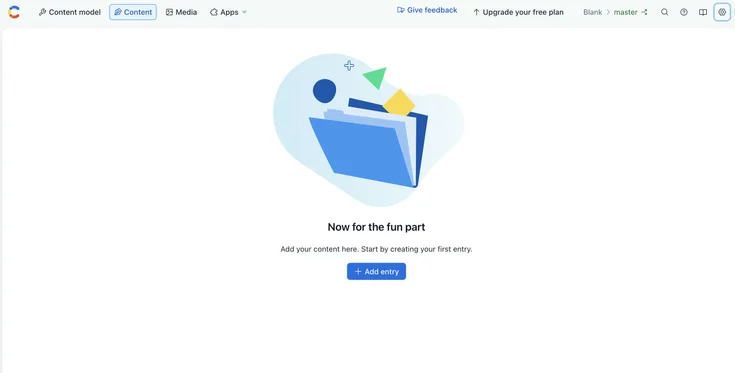
Strapi: Open Source Flexibility
Overview
Strapi is an open-source headless CMS known for its adaptability. Built with JavaScript, it integrates smoothly with frameworks like React and Vue.js, making it a strong option for developers seeking full control over their projects.
Major Features
- Open source: As an open-source solution, Strapi allows developers to access and modify its source code, making it highly adaptable to specific project requirements.
- RESTful and GraphQL APIs: Strapi supports RESTful and GraphQL APIs, offering developers the choice of how they prefer to interact with the CMS.
- Plugin System: Extend Strapi’s functionality with plugins for SEO, analytics, and more.
- Performance and security: Strapi also focuses on performance and security, ensuring your content is delivered quickly and safely.
Overall, Strapi exemplifies the benefits of open-source headless CMS examples, offering unmatched flexibility and control.
Advantages and Disadvantages Strapi offers several advantages, starting with its open-source nature, which provides unparalleled flexibility and customisation options. Developers can modify the source code to suit specific project needs, making it a highly adaptable solution. The platform’s robust admin panel simplifies content management, even for non-technical users. Additionally, Strapi supports both RESTful and GraphQL APIs, giving developers flexibility in how they interact with the CMS. The plugin system also allows for easy extension of functionality, making it versatile for various use cases.
However, Strapi has some disadvantages. One major drawback is that it requires more technical expertise to set up and customise compared to some other headless CMS examples. This can be a barrier for smaller teams or those without advanced development skills. Additionally, while the open-source model offers flexibility, it also means that users are responsible for their own support and maintenance, which can be time-consuming. Despite these challenges, Strapi remains a powerful and flexible headless CMS solution.
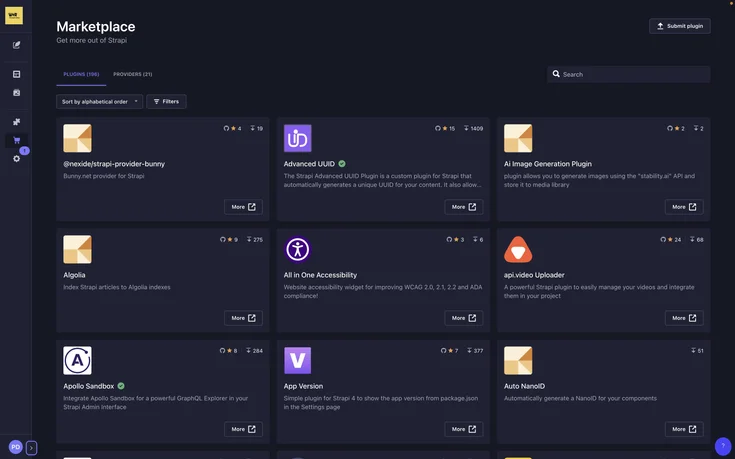
Sanity: Real-time Collaboration and flexibility
What Makes Sanity Stand Out?
Sanity’s focus on real-time collaboration and flexible data modeling sets it apart from other headless CMS platforms. Its Sanity Studio is a customizable editing environment, allowing teams to design workflows tailored to their unique needs. Sanity’s real-time capabilities also allow multiple users to work on content simultaneously, similar to collaborative platforms like Google Docs.
Core Features of Sanity
- Sanity Studio: One of Sanity's primary features is the Sanity Studio, a customisable editing environment built with JavaScript and React. This allows teams to tailor the interface to match their specific workflows and needs.
- Real-Time collaboration: Another significant feature is real-time collaboration. Multiple users can edit content simultaneously, with changes reflected in real-time, similar to collaborative platforms like Google Docs.
- Flexible data model: Sanity also provides a flexible and dynamic data model. Users can define custom content structures using JavaScript, making it adaptable to a variety of project requirements.
- Robust APIs: The platform supports robust APIs, including GraphQL, for efficient content delivery and querying. Additionally, Sanity’s plugin ecosystem allows for easy integration with other tools and services, enhancing its functionality.
These core features collectively make Sanity a powerful and flexible solution for teams seeking real-time collaboration and customisability in a headless CMS.
Pros and Cons of Using Sanity
Sanity offers several advantages, starting with its real-time collaboration capabilities, which allow multiple users to edit content simultaneously without conflicts. This feature is particularly beneficial for teams that need to work together closely. Another pro is the highly customisable Sanity Studio, which can be tailored to fit specific workflows and requirements. The flexible data model and robust APIs, including GraphQL, make it adaptable and efficient for various projects. Additionally, the plugin ecosystem allows for seamless integration with other tools and services.
However, there are some cons to consider. One disadvantage is the complexity involved in setting up and customising the platform, which may require more technical expertise compared to other headless CMS examples. Another potential drawback is the cost, as Sanity’s pricing can be higher than some alternatives, particularly for larger teams or projects with extensive requirements. Despite these challenges, Sanity remains a strong choice for those seeking real-time collaboration and extensive customisability.
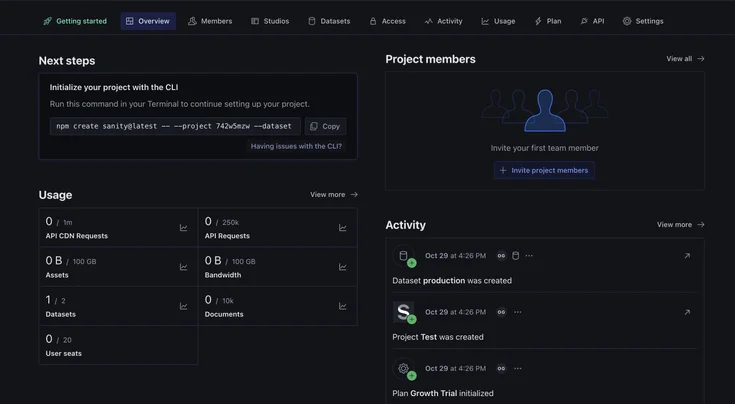
Ghost: Focused on Publishing
Ghost CMS Overview
Ghost is a headless CMS tailored for content-driven sites, particularly blogs and online publications. Originally built for writers and digital publishers, Ghost excels in performance, SEO, and content monetization, providing a streamlined experience for content creators.
Main Features of Ghost
- User-Friendly editor: One of Ghost's standout features is the user-friendly editor, which supports Markdown for easy content formatting and a clean writing interface. This makes content creation straightforward and enjoyable.
- SEO tools: Ghost also includes built-in SEO tools, which help optimise your content for search engines without requiring additional plugins or extensions.
- Membership management: Another significant feature is its membership management system. Ghost allows you to create and manage a subscription-based model, enabling monetisation through memberships and paid content. The platform also supports integrated newsletter distribution, allowing you to engage directly with your audience from within the CMS.
- API-First architecture: Ghost’s API-first architecture ensures that content can be efficiently delivered to various frontends, whether it’s a website, mobile app, or other digital platforms. Additionally, Ghost is built on Node.js, ensuring fast performance and scalability.
These features collectively make Ghost a powerful and efficient headless CMS for digital publishers.
Benefits and Drawbacks of Ghost
Ghost CMS offers several benefits, particularly for digital publishers. One of its main advantages is the user-friendly editor, which supports Markdown and provides a clean, distraction-free writing environment. This makes content creation quick and efficient. The built-in SEO tools and membership management system further enhance its appeal, allowing users to optimise content for search engines and monetise their work through subscriptions. Ghost’s integrated newsletter distribution also helps engage audiences directly from the platform, streamlining communication efforts.
However, there are some drawbacks. Ghost is built on Node.js, which may require specific technical knowledge for setup and customisation, potentially posing a barrier for those unfamiliar with the technology. Another limitation is that while Ghost excels in publishing, it may lack some of the broader functionality found in other headless CMS examples, making it less suitable for complex, multi-faceted projects. Despite these limitations, Ghost remains a strong choice for those focused on publishing high-quality content efficiently.

Prismic: Simple and Powerful
Introduction to Prismic
Prismic combines user-friendliness with powerful features, making it a practical choice for teams that need easy content management with multi-channel capabilities. Its unique “slices” system allows developers to create reusable components, enabling content creators to design layouts without coding.
Key Features of Prismic
- Slices System: Prismic allows for creating reusable content blocks, making layout customization easy for non-technical users.
- Multi-Channel Publishing: Seamlessly distribute content across websites, mobile apps, and other digital platforms.
- SEO Tools and Content Scheduling: Includes built-in SEO tools and content scheduling for optimized, timely content delivery.
- API-First: Prismic’s robust APIs make it easy to integrate with various frontend frameworks.
- Intuitive User Interface: The straightforward UI enables content creators to manage assets without extensive technical training.
Pros and Cons of Prismic
Prismic offers several advantages, beginning with its user-friendly interface that simplifies content management for non-technical users. The “slices” feature is another major pro, enabling the creation of reusable content components that can be easily assembled and customised. This flexibility is beneficial for dynamic content layouts. Prismic’s support for multi-channel publishing ensures seamless content delivery across various platforms, including websites and mobile apps. Additionally, built-in SEO tools and content scheduling capabilities add to its utility, making optimised and timely content delivery straightforward.
However, there are some drawbacks to consider. One potential con is the cost, as Prismic can be more expensive than some other headless CMS examples, particularly for larger projects with extensive content needs. Another limitation is that while Prismic excels in simplicity and ease of use, it may lack some of the advanced customisation options available in more developer-centric platforms. Despite these drawbacks, Prismic remains a strong choice for those seeking a balance of simplicity and powerful features.
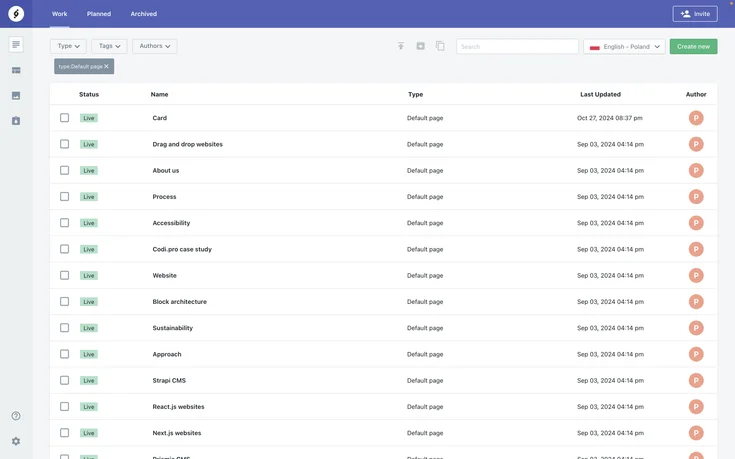
Conclusion
Summary of Headless CMS Examples
Each of these headless CMS platforms brings unique advantages for different types of projects:
- Contentful: it stands out with its robust API and scalability, making it suitable for a wide range of projects.
- Strapi: with its open-source flexibility, offers extensive customisation options, ideal for developers looking for complete control.
- Sanity: excels in real-time collaboration and customisability, making it a great choice for teams working closely together on content.
- Ghost: focuses on publishing, providing a streamlined, high-performance platform for digital publishers.
- Prismic: user-friendly with powerful multi-channel capabilities, Prismic works well for teams needing straightforward content management.
Choosing the Right Headless CMS for You
Selecting the right headless CMS depends on your project’s unique goals, technical requirements, and the resources available within your team. For large, scalable projects, Contentful is an excellent choice, offering robust API support and localization capabilities that make it adaptable to growth and diverse audience needs. If customization is a priority, Strapi’s open-source framework gives developers extensive control over content management, allowing for tailored solutions that align precisely with your project’s requirements.
For teams needing strong collaboration, Sanity’s real-time editing features make content management a seamless experience, enhancing productivity and workflow for team-oriented projects. Meanwhile, Ghost’s SEO-optimized and performance-focused publishing tools make it perfect for content-driven websites looking to streamline content creation while maintaining high performance. Prismic, on the other hand, combines multi-channel support with an intuitive layout builder, offering flexibility and ease of use for teams that need straightforward content distribution across platforms.
Aligning your choice of CMS with your project’s specific needs will empower your team to deliver engaging digital experiences that connect with your audience. With the right CMS, your team will efficiently manage content and scale your digital presence as your business grows.
If you're ready to create a website and aren’t sure which CMS best fits your goals, we’re here to help. Get in touch, and we’ll guide you to the perfect CMS solution to make your project a success.